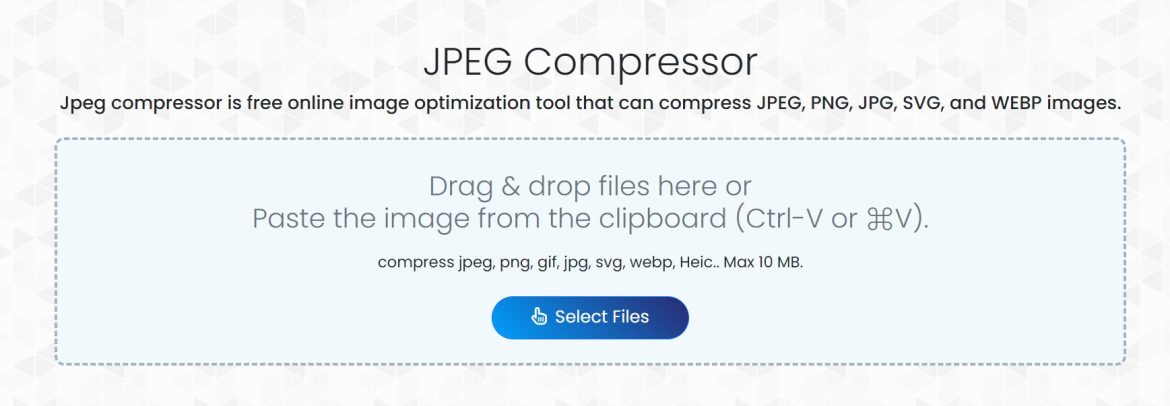How does JPEG Compressor work?
JPEG Compressor reduces the size of a file to make it easier to send or download, but it also allows for easy conversion back to the original file. Popular uncompressed file formats for file compression include ZIP and RAR. GZIP compression is frequently used in a web context to reduce the size of JavaScript and CSS files. PNG is a well-known lossless image compression format.
Lossy compression, which is frequently used when compressing photos, is an alternative to lossless compression. The most popular compressed image format is probably JPEG. Lossy compression will reduce some image detail, resulting in a significantly smaller file size. Losing some quality is frequently a wise tradeoff because large photos would otherwise be too heavy to transfer and store.
Select a dataset.
We’ll need some images to start before we can test lossless compression. We’ll need some sample images with graphics, logos, and text since lossless compression is not very efficient for photographs. What I ultimately did was download a collection of pictures from the designer portfolio website Dribble.
The majority of the images show logos, illustrations, websites, or mobile applications. Lossless compression is ideal for images of this type. About 100 of the most popular “shots” or images from the website were downloaded by me.
Since many of the images were quite large, I reduced their size to a maximum of 1000 pixels so that compressing them wouldn’t take an eternity. SRGB color space is another thing I verified.
file formats test
I made the decision to test the PNG, lossless WebP, AVIF, and JPEG XL image formats. With the exception of JPEG XL, which is supported by Chrome and Firefox but needs to be enabled using a feature flag, all of them can currently be used in browsers. Future versions of these browsers are likely to include JPEG XL support by default.
PNG
Portable Network Graphics is the abbreviation for this. One of the earliest web image formats, it was first made available in 1996. It was initially created as a replacement for the GIF format, which at the time was subject to a patent. PNG has many benefits over GIF, including an alpha channel and full 24-bit color (8 bits per channel). Each image can only have 256 colors in a GIF file, plus one transparent color.
WebP
In 2010, Google introduced WebP, a lossy image format built on the VP8 video codec. A lossless mode, unrelated to the VP8 codec, was added to WebP 0.3 in 2012. Lossless WebP will keep all of the original image data while lossy WebP is restricted to 4:2:0 Chroma subsampling, which discards some color information.
AVIF
AV1 Image File Format is referred to as AVIF. The AV1 video codec serves as the foundation for this new image format. It has a lot of cutting-edge features, like support for HDR and high bit depth. Both lossless and lossy compression is supported by the format.
Recent versions of Google Chrome support AVIF, and a configuration flag in Firefox can make it available.
JPEG XL
A brand-new and upcoming image format is JPEG XL. The Pik image format created by Google and the FUIF (Free Universal Image Format) created by Cloud nary were combined to create JPEG XL.
VarDCT format based on Pik is the default for the cjxl command-line tool, but FUIF-derived Modular mode can be chosen by specifying the -modular flag on the command line. Both lossless and lossy compression are supported by JPEG XL.
Conclusion
According to the test results, even the most optimized PNG is significantly less efficient than the majority of contemporary lossless image formats, such as WebP and JPEG XL.


